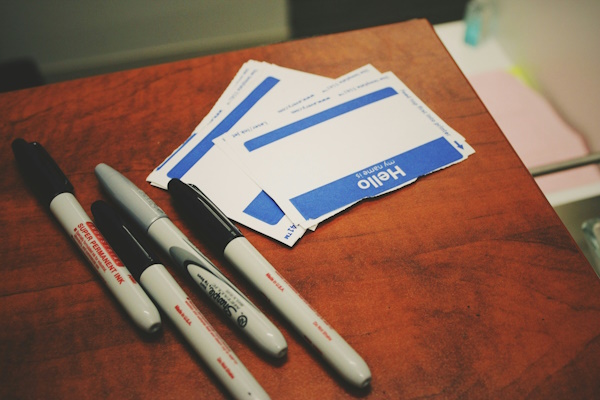8 essential hotel call center metrics
It’s time for performance reviews, and all eyes are on your call center. The team is about to find out if your reservation agents exceeded revenue goals and maximized direct bookings, or fell short. Wouldn’t it be helpful to explain your call center’s performance with consistent, reliable, and strategically collected data?
Your call center agents work hard to secure bookings, so don’t let that hard work go to waste. Define and consistently track hotel call center metrics to build a bank of historical data that lends opportunities to learn and improve your call center.
We’ve gathered 8 hotel call center metrics that you should consider to help agents shine, increase guest satisfaction, and drive revenue.
What you will see here
- Touchpoints per booked call
- Call volume
- Average handle time (AHT)
- Average wait time
- Email capture rate
- Call quality
- Inbound and outbound conversion rates
- Employee retention rate
- Achieving hotel call center success with technology
1. Touchpoints per booked call
Not every guest will book on the first call, and that’s ok. You may need to follow up or they may want to call you back. As long as you capture the guests’ email address (see email capture rate below!), the conversation isn’t over.
Record how many touchpoints it takes before a caller finally books to build an overview of the total guest booking journey. Use this information to inform what kinds of follow up actions your agents should take to capture bookings. Use outbound calls or schedule emails so that the lead doesn’t go cold.
Your call center should have a clear picture of the end-to-end booking experience, and touchpoints per booked call are one aspect of that picture.
2. Call volume
Call volume is often a direct reflection of your hotel’s demand. It’s also important for optimizing your staffing levels.
Take a look at historical data to see when your call center experienced spikes in volume, and map it to abandoned calls and closed bookings during that time. Use that information to staff accordingly and plan to accommodate both peaks and lulls. No call should go to waste.
3. Average handle time (AHT)
How much time agents spend on each call indicates how efficient your team is. From here, drill down to find out what contributes to longer call handle times.
Your call center technology can have a big impact on AHT. Can your staff quickly redirect conversations to the appropriate department or agent? Do supervisors have access to recordings to quickly resolve disputes or understand coaching opportunities?
Agents who know your property won’t struggle to provide detailed and clear answers to questions from prospective guests. And with the right technology, your AHT should be under control.
4. Average wait time
Nobody likes waiting, including your callers hoping to speak to a reservations agent. Long wait times can diminish the level of service your guests experience and contribute to abandoned calls. Checking in on average wait times and brainstorming how to consistently shave off minutes or even seconds is worthwhile. An always-available 24/7/365 staff helps too.
5. Email capture rate
Don’t forget the email address! Staying in touch with guests, even after booking, is crucial for driving repeat business. Take a look at your call data and remind agents to collect the guest’s email address before they hang up the phone. See that those capture rates remain strong to ensure future marketing opportunities.
6. Call quality
Consider recording calls to track call quality and guest satisfaction. These recordings are a great training tool for reservation agents to improve how they build rapport or ask for the booking. Agents should iterate on sales pitches and incorporate data into every talking point to be top-notch.
But they should also establish a true connection with the guest, because calls to book are also part of the guest experience. Call quality not only refers to successful selling, but to a pleasant experience for the guest.
7. Inbound and outbound conversion rates
The bottom line is to secure bookings, right? Conversion rates are at the heart of your call center’s success, so dramatic increases or decreases in conversion rates will tell you if your sales strategies are resonating. Hoteliers using Revinate’s Reservation Sales achieved up to a 43% conversion rate for inbound calls.
8. Employee retention rate
Without your reservations team, your voice channel would collapse—leaving a serious gap in revenue. Hiring and training new staff is time-consuming and expensive.
When agents feel equipped with adequate training to excel at their roles, it inspires confidence and job satisfaction, mitigating employee turnover and boosting retention. Agents should feel like there’s room to grow. Don’t miss out on the opportunity to build their skillset and supply them with the data they need to make bookings happen.
So check in with your agents regularly to make sure they feel empowered. Low employee turnover rates are a sure sign your call center is on track.
Achieving hotel call center success with technology
While the hospitality industry is experiencing an ongoing digital transformation, the voice channel isn’t dead. In fact, call centers are ripe for technological advancements that make t easier to track these hotel call center metrics.
For instance, technology capable of recording calls, adding email addresses to guest profiles, and monitoring call leads is likely to increase the number of direct bookings for your hotel. Tech can also help automate follow-ups to unbooked calls with targeted email campaigns.
Consider these 8 hotel call center metrics as you plan goals for your call center. The data you gather is priceless and offers a valuable reference to benchmark the performance of your call center and drive more direct revenue.
Related Posts

Insights that drive results
Subscribe now to get the latest content
This site is protected by reCAPTCHA and the Google Privacy Policy and Terms of Service apply. *Required fields.



